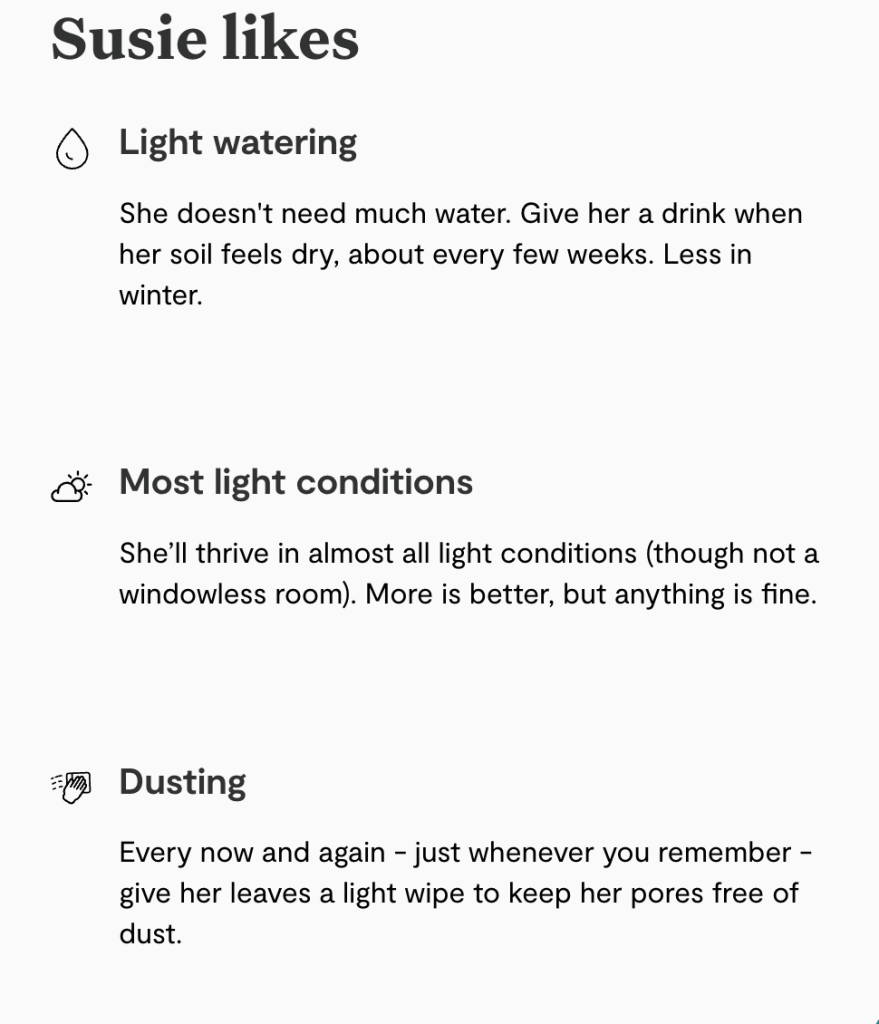Google has been focusing on content quality for years but since 2022, Google has released several helpful content updates and E-E-A-T guidelines, putting more focus on providing reliable, trustworthy and helpful content. In this article, we will delve into the concept of E-E-A-T and how to improve E-E-A-T for your site to stand out in today’s competitive digital landscape.
E-E-A-T consists of four components that Google uses to assess the quality of a website’s content: Experience, Expertise, Authority and Trustworthiness. By optimising your site for each of these components and ensuring that your content aligns with what search engines and users value most, Google will be more likely to show your content (where relevant) above other competitors that might not be optimised for E-E-A-T.
The concept of E-E-A-T developed from the initial E-A-T principle introduced in 2014 by Google in its Search Quality Guidelines. The objective was to combat low-quality content and to improve the search experience by ensuring that high-quality, trustworthy information ranked higher in the search engine results pages (SERPs). As the digital landscape evolved, Google further expanded these guidelines in 2022 to emphasise not just Expertise, Authoritativeness and Trustworthiness, but also the Experience of the content creator.
The addition of Experience to form E-E-A-T underpins Google’s commitment to providing search results that do not merely contain factually accurate information, but also convey insights derived from actual, lived experiences. By refining their quality rater guidelines with E-E-A-T, Google aims to prioritise content that offers the most meaningful and contextually applicable information to enhance user satisfaction and trust in the results provided by the search engine.
Now that you have a better understanding of why Google introduced E-E-A-T, let’s delve deeper into what each component is and why it’s important to optimise for them.
Experience refers to the practical knowledge or skill that your content demonstrates, which is gained through direct involvement or contact with the topics being discussed. Google favours content that shows a lived-in familiarity with the topic, as it suggests to readers that the information is grounded in real-world application and personal involvement.
Here’s a nice example from Sole Supplier on their Author Bio’s.

Expertise assesses the level of knowledge or competence that your content reflects. It goes beyond surface-level information to show that the content creator has a comprehensive understanding of the topic. This expert insight is imperative for gaining users’ trust and it signals to search engines that your content is a reliable source of information.
Patch Plants do a great job of this with the level of detail they put into each product page.

Authority measures how much your website or content is recognised as a leading source within its field. It’s established through factors like brand reputation, user reviews and backlinks from reputable sources. For SEO, building topical authority cements your site’s place as a go-to destination for specific queries, making it more likely for search engines to rank it highly.
Trustworthiness determines the accuracy and legitimacy of your website and its content. It encompasses factors like site security, citation of reputable sources and transparency about the author and the brand’s mission. Optimising for trustworthiness is crucial, as it reassures both users and search engines that your site is credible and reliable.
E-E-A-T is a set of guidelines applicable to all websites that aim to rank well on Google, regardless of their industry or content type. While it is often closely associated with Your Money or Your Life (YMYL) sites, it’s equally relevant to eCommerce sites and informational blogs.
In fact, every site has the potential to display Experience, Expertise, Authority and Trustworthiness. Optimising for E-E-A-T is a fundamental SEO practice for all site types as it can significantly affect the performance and credibility of any online content.
YMYL Sites: YMYL websites encompass a broad range of topics, including financial advice, medical information and legal matters. They are held to the highest standard with respect to E-E-A-T as inaccuracies can have critical real-life consequences.
eCommerce Sites: Often overlooked in discussions of E-E-A-T, eCommerce sites must also demonstrate a high level of trust, particularly in areas like transaction security, clear customer service policies and accurate product descriptions. These factors contribute to a site’s overall trustworthiness and authoritativeness.
The Helpful Content Update is Google’s algorithmic effort to reward content that not only contains the accurate, reliable and authoritative information E-E-A-T embodies, but also prioritises user experience (UX) by offering genuinely useful and engaging content.
This initiative aims to ensure that websites producing content with a user-first approach, which aligns with the E-E-A-T criteria, are more likely to gain prominence in the SERPs. It emphasises a holistic approach to quality content, by encouraging sites to create content that is not only created by experts, but is also practical and beneficial to readers. This further shows Google’s ongoing commitment to connect users with content that serves their needs and enriches their online experience.
While E-E-A-T is not a ranking factor in the traditional sense where specific algorithms measure and assign value, it does help Google to determine the quality of your content, which can help your content rank.
Google’s algorithms, underpinned by machine learning, seek to assess the quality of content by closely aligning with the principles of E-E-A-T. High-quality, valuable content is naturally rewarded with better rankings as it satisfies the search engine’s ultimate goal of offering an excellent UX. Content that embodies Experience, Expertise, Authoritativeness and Trustworthiness signals to Google that it’s a credible source, which can influence its visibility in SERPs.
Although Google’s algorithms don’t explicitly check for E-E-A-T factors, they do interpret the signals that correlate with the components of E-E-A-T. Therefore, content that aligns with the E-E-A-T guidelines is more likely to be perceived positively by Google’s complex ranking system, ultimately enhancing the content’s potential to achieve higher rankings
Google’s algorithm operates on a range of quality ranking signals designed to evaluate and rank content. These signals are indicators that Google uses to determine the relevance and quality of web pages in relation to user search queries.
These quality ranking signals encompass factors such as content relevancy, backlink quality, site speed, mobile-friendliness and user engagement metrics, among others.
Relevance: Google analyses whether the content of a page is relevant to the search query, using keywords and the context in which they are presented.
Backlink Profile: Quality backlinks from authoritative sites act as endorsements, suggesting that the content is valuable and trustworthy.
Site Performance: A website that loads quickly and offers a seamless experience across devices, particularly mobile, is considered to be more user-friendly.
User Behaviour: Metrics such as click-through rate, dwell time and bounce rate provide insight into how users interact with a site and if they find the content useful.
When these signals align with the principles of E-E-A-T, the likelihood for the content to be perceived positively by Google increases. The combination of high-value content as guided by E-E-A-T and the Helpful Content Guidelines, and the optimisation of technical and user-focused signals, form a compelling basis on which Google can determine a page’s quality and relevance. This has a profound effect on rankings, pushing website owners to prioritise both high-quality content and an exceptional UX.
Google’s Quality Rater Guidelines have different levels of E-E-A-T: Lowest, Lacking, High-Level and Very High-Level. These levels help raters and algorithms to assess the quality of a website more systematically.
Lowest E-E-A-T: Pages with the lowest E-E-A-T display deceptive practices, such as presenting misleading information, fraudulent claims or falsified data. These are pages that Google deems harmful to users as they can spread misinformation, represent scams or manipulate users in various forms, including through page design.
Lacking E-E-A-T: Lacking E-E-A-T pages may not be inherently deceptive, but insufficiently display expertise. They typically create content that fails to provide comprehensive and accurate answers to users’ queries or the author lacks the credentials and necessary background to be considered an authority on the subject.
High-Level E-E-A-T: Pages with high-level E-E-A-T display robust evidence of expertise and authoritativeness. The content is factual and well-researched and the authors are recognised experts in their field. These pages often draw from first-hand experience and are typically linked to or cited by other authoritative sources.
Very High-Level E-E-A-T: Very high-level E-E-A-T pages are the pinnacle of trustworthiness and reliability. They are sites that not only have content created by top-tier professionals, but are also a go-to source within their industry. They serve as benchmarks for accuracy and dependable information and are typically the original source of a given piece of content that others reference.
Google’s quality raters use these categories to evaluate pages by looking for clear signals of credibility, such as the author’s reputation, the accuracy of content against competitors in the field, the quality and type of external links, user reviews and available contact information. By distinguishing pages thisway, Google enforces a standard that encourages the creation of trustworthy content across the web.
With the prevalence of artificial intelligence (AI) generated content, it’s important to remember that it’s difficult for these tools to reflect all components of E-E-A-T. AI algorithms often lack the understanding, expertise and the personal touch of an industry professional, which is imperative in creating content that truly resonates with users and complies with E-E-A-T guidelines.
While AI-generated content is a useful tool, you must remember to review the content as an industry professional, or hire an industry expert to review the content for you, for all the content on your website as it is incredibly challenging for these tools to fully encapsulate all components of E-E-A-T. This is particularly important for YMYL sites, where accurate and authoritative information is crucial due to its potential impact on a person’s future well-being, financial status or safety. Even eCommerce sites, which may not deal directly with traditional YMYL topics, must consider E-E-A-T guidelines to establish trust and credibility with consumers.
The bottom line remains: AI-generated content is a tool, not a replacement for the input of knowledgeable professionals in upholding the integrity and quality of the content on your website.
To maximise your site to comply with Google’s E-E-A-T guidelines and boost your SEO performance, consider the following best practices:
Author Transparency: Clearly display author bios with credentials and relevant experience to showcase expertise and authoritativeness.
Content Citations: Reference authoritative sources within your content to demonstrate thorough research and accuracy to enhance trustworthiness.
Editorial Standards: Establish and maintain high editorial standards, including fact-checking processes to ensure content is accurate and reliable.
Regular Updates: Keep your content up-to-date to reflect the latest information and trends in your industry, highlighting your site’s commitment to providing timely expertise.
Secure and Accessible Website: Make sure your site uses HTTPS and follows accessibility guidelines to promote a safe and inclusive UX.
User Engagement: Promote user trust by responding to comments, addressing concerns and enabling feedback.
Visible Contact Information: Provide clear and easily accessible contact details to reinforce credibility.
Quality Backlinks: Pursue backlinks from reputable sources within your field to signal the authoritative nature of your content to Google.
Quality User Experience: Designing a site navigation and interface which satisfies UX indirectly contributes to perceived trustworthiness.
Social Proof: Showcase testimonials, user reviews and case studies to provide real-world evidence of the value of your site.
Implementing these strategies will not only adhere to E-E-A-T, but will also serve to enhance the overall standing of your site in the eyes of both users and search engines.
When aiming to comply with E-E-A-T guidelines, it’s crucial to avoid common mistakes that can negatively impact your site’s content quality. Steering clear of these pitfalls can help your site maintain the high-level E-E-A-T status that is pivotal to stand out in the SERPs. These common E-E-A-T mistakes include:
Creating Unhelpful Content: Content should always provide value to the reader. Avoid publishing material that is superficial or fails to sufficiently answer the user’s query.
Buying Backlinks: Search engines favour organically grown link profiles as indicators of content quality and relevance. As a result of buying backlinks, it can negatively impact your site’s authority, violates Google’s guidelines and is likely to result in your site being penalised.
Lack of Transparency: Not displaying or hiding author information and not providing clear contact details can significantly reduce perceived trustworthiness among users and search engines alike.
Ignoring Content Quality: Duplicating content, trivial updates and failing to fact-check can all negatively impact expertise, authoritativeness and trustworthiness.
Neglecting User Experience: Overlooking the design and usability aspects of your site, including mobile responsiveness and page loading speed, can detract from user trust and satisfaction.
Aiming for excellence in E-E-A-T is more than just a recommendation, it’s critical to succeed in today’s competitive digital landscape. The right E-E-A-T SEO strategy can elevate your website above the competition, improving your visibility, credibility and user trust.
Remember, navigating E-E-A-T is not just about ticking the boxes—it’s about demonstrating a genuine commitment to quality and reliability in every aspect of your online presence.
